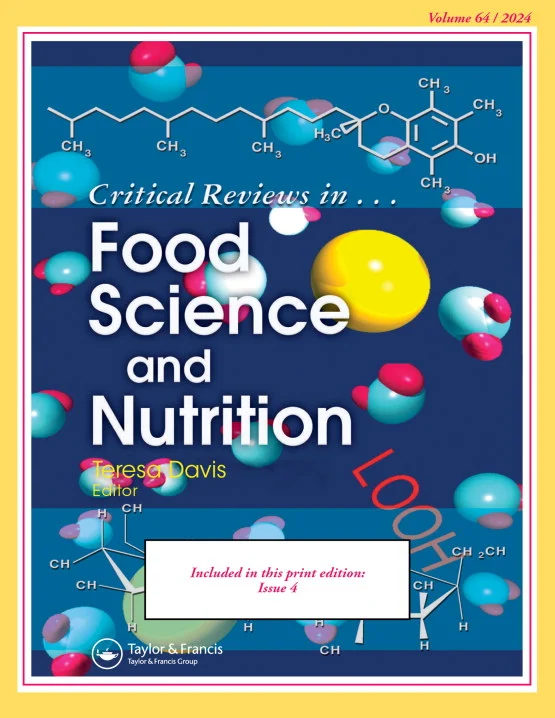生物强化作为高收入国家改善营养状况的食品战略:范围界定审查。
IF 7.3
1区 农林科学
Q1 FOOD SCIENCE & TECHNOLOGY
Critical reviews in food science and nutrition
Pub Date : 2024-09-13
DOI:10.1080/10408398.2024.2402998
引用次数: 0
摘要
生物强化(在收获前增加食物中的微量营养素含量)已被成功用于改善中低收入国家主食的营养状况。这种方法也有助于解决高收入国家(HICs)高危人群微量营养素不足的问题,然而,人们对生物强化干预措施在这方面的潜力还不甚了解。本范围界定综述旨在评估与高收入国家(HICs)人类消费有关的生物强化食品现有研究证据的性质和范围。在 MEDLINE、WoS、ProQuest、CINAHL、AGRIS 和 Epistemonikos 中进行了文献检索。共收录了 46 篇经同行评审的文章。大部分研究在美国(15 篇)和意大利(11 篇)进行,涉及谷类作物(14 篇)和蔬菜(11 篇),以及硒(12 篇)和维生素 A(11 篇)。文献中确定了七个研究领域:生物利用率(n = 17);营养素稳定性(n = 11);观点和态度(n = 9);功能性(n = 9);感官特性(n = 2);安全性(n = 1);以及建模(n = 1)。在每个领域,来自 HIC 的证据都很有限。需要开展更多的研究,特别是在对文化和社会经济背景敏感的领域。本文章由计算机程序翻译,如有差异,请以英文原文为准。
Biofortification as a food-based strategy to improve nutrition in high-income countries: a scoping review.
Biofortification (increasing the micronutrient content of food before harvest) has been successfully used to nutritionally improve staple foods in low- and middle-income countries. This approach could also help address micronutrient shortfalls in at-risk populations in high-income countries (HICs), however, the potential of biofortification interventions in this context is not well understood. The aim of this scoping review is to assess the nature and extent of available research evidence on biofortified foods in relation to human consumption in HICs. Literature searches were conducted in MEDLINE, WoS, ProQuest, CINAHL, AGRIS and Epistemonikos. Forty-six peer-reviewed articles were included. Most research was conducted in the USA (n = 15) and Italy (n = 11), on cereal crops (n = 14) and vegetables (n = 11), and on selenium (n = 12) and provitamin A (n = 11). Seven research domains were identified in the literature: bioavailability (n = 17); nutrient stability (n = 11); opinions and attitudes (n = 9); functionality (n = 9); sensory properties (n = 2); safety (n = 1); and modeling (n = 1). Evidence from HICs in each domain is limited. There is a need for more research particularly in areas sensitive to the cultural and socio-economic context.
求助全文
通过发布文献求助,成功后即可免费获取论文全文。
去求助
来源期刊
CiteScore
22.60
自引率
4.90%
发文量
600
审稿时长
7.5 months
期刊介绍:
Critical Reviews in Food Science and Nutrition serves as an authoritative outlet for critical perspectives on contemporary technology, food science, and human nutrition.
With a specific focus on issues of national significance, particularly for food scientists, nutritionists, and health professionals, the journal delves into nutrition, functional foods, food safety, and food science and technology. Research areas span diverse topics such as diet and disease, antioxidants, allergenicity, microbiological concerns, flavor chemistry, nutrient roles and bioavailability, pesticides, toxic chemicals and regulation, risk assessment, food safety, and emerging food products, ingredients, and technologies.

 求助内容:
求助内容: 应助结果提醒方式:
应助结果提醒方式:


